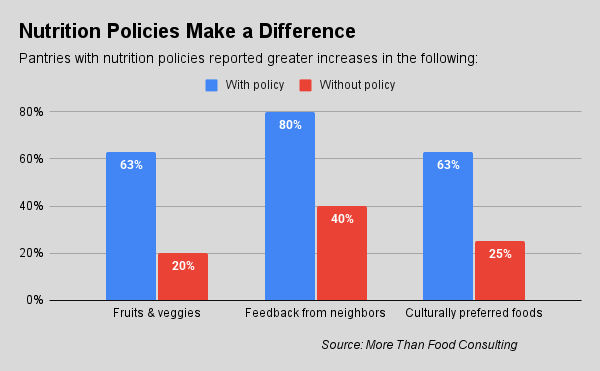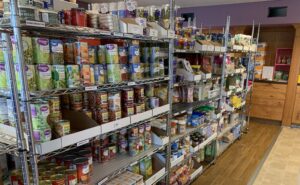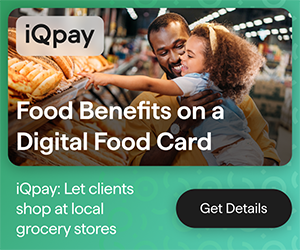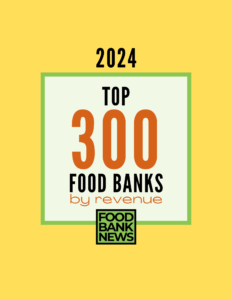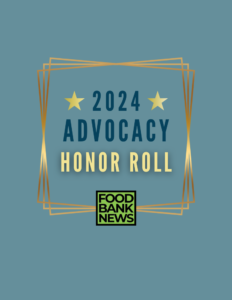Seven years ago, MAZON: A Jewish Response to Hunger, published what it called a “groundbreaking” report on food bank nutrition policies. It found that food banks with formal nutrition policies distributed more fresh fruits and vegetables than those without, while also distributing much less unhealthy food. (See our article on the report here.)
Now, More Than Food Consulting, working with the American Heart Association and the Washington Food Coalition, has published another look at nutrition policies, this one highlighting additional compelling reasons for food banks and pantries to have them. The organizations relayed their findings during a webinar last month.
As in the MAZON study, the new study found that organizations with nutrition policies increased fruits and vegetables (63% versus 20% for those without nutrition policies). Plus, they were more likely to collect feedback from neighbors (80% versus 40%) and to increase culturally preferred foods (63% versus 25%).
New Day Ministry, which operates a four-day-a-week food pantry in Bremerton, WA, is seeing those benefits and more since crafting a nutrition policy. “It helps us focus on not just providing food, but providing good, nutrient-dense food,” said Chantal Brooks, Food Safety Manager and Nonprofit Administrator, during the webinar. New Day is also more aware of cultural holidays and able to accommodate them, she added.
New Day was drawn to the idea of a nutrition policy after seeing a pattern of clients coming into the pantry and sharing information about their struggles with chronic health conditions, Brooks said. At the same time, New Day realized it didn’t have any nutritional information about the food that it was offering to help clients with their choices. “This trend was really disturbing to us,” Brooks said.
Through a grant contact, New Day found out about resources available through the American Heart Association to help it develop and carry out a nutrition policy program. The association is seeking to support pantries throughout the nation as they create and implement nutrition policies, according to Elena O’Callahan, Community Impact Director at American Heart Association. A new tool on its website is designed to help pantries locate American Heart Association staff in their local areas who can be of assistance in those goals.
At New Day, the help included technical support to create its three-page nutrition policy, as well as a grant to purchase a freezer to store healthy proteins. New Day was also able to create a donor guide, which highlights the food donations it welcomes, and those it discourages. Finally, it got training on how to read nutrition guidelines and food labels, as well as posters to relay nutrition information to clients. New Day uses the green-yellow-red format of the SWAP (Supporting Wellness in Pantries) system to help guide clients toward healthy food choices.
One of the most difficult aspects of instituting a nutrition policy can be defining healthy food. Most policies build off of the Healthy Eating Research guidelines for charitable food that were developed and introduced to the industry about five years ago. Noted Maisie Campbell, Program Manager at More Than Food Consulting, “It was very evident among agencies that did not use a set of guidelines at their organization that conversations about nutrition got a little confusing because there was no common definition of what they were working towards.”
Campbell added that there was “no magic formula” to getting buy-in for building a nutrition policy, only that it was important to engage people early in the process. She also encouraged pantries to have an implementation plan for rolling out the policy that includes sharing it with food and financial donors, noting that only about half of pantries surveyed had such a plan. “We see that as a key area of improvement,” Campbell said.
New Day has shared its nutrition policy far and wide. For starters, it included its board and paid staff in every meeting related to developing its nutrition policy, Brooks said, realizing that the rollout wouldn’t be successful otherwise. It has also shared the policy on social media, with grocery store donors and financial donors, when applying for grants, in its senior food boxes and in its kitchen to guide meal prep. “We refer back to our policy as a guiding framework,” Brooks said. – Chris Costanzo
Like what you’re reading?
Support Food Bank News
